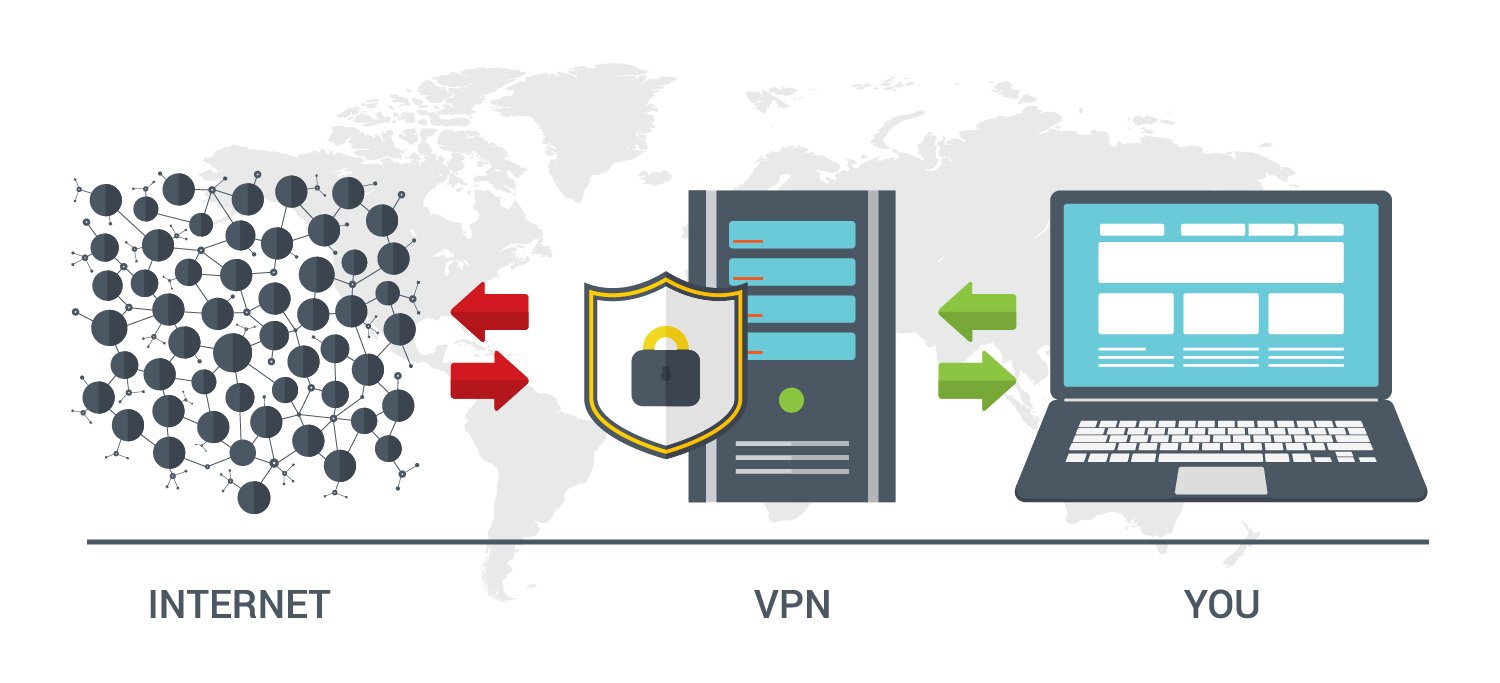Working from home is on the rise in the United States. According to a FlexJobs & Global Workplace Analytics report, there has been a 159% Increase in Remote Work Since 2005. If you work for a company that has instituted a remote work policy on a full or part-time basis, it is essential to put security measures in place on your home network, just like how you would in a traditional office environment.
Cyber-crime is increasing as well as users move their work home. Security experts predict a 30-40% increase in cyber-attacks as remote work increases. Protecting your system is an intimidating task to take on for the majority of Americans, but there are some simple steps you can take to secure and encrypt your data. The first step to take is to use a Virtual Private Network (VPN).
What is a VPN?
A VPN is a security service that creates a secure tunnel back to a specific location on a network. For remote workers and telecommuters, a VPN allows access to your workplace's internal network from a remote location. The network builds a tunnel across the internet, creating an encrypted path that sends and receives data securely, without any cybercriminals being able to view the communication. Your companies data is worth more than you think, and every file, email, and chat message you send could contain valuable data that cybercriminals want.
Securing your network with a VPN is a necessary piece of a reliable remote workplace policy. If you do not have access to a workplace VPN at home, check with your internal IT team or IT service provider.
After connecting to the virtual network, you will have a secure connection back to the system - but what if your home network and router aren't safe? Without proactive security at home, your data security is still at risk.

Home Network Security Guide - Simple Steps for Remote Workers to Take
Check your router's username and password
First and foremost, change your router username and password combo if you haven't already. Most router manufacturers have the default username credentials as admin or administrator. This standardization makes routers an easy target for cybercriminals - if your router allows it, change your username to something unique that only you know. If your device doesn't allow username changes, then make sure you are choosing a strong password to limit access.
Some best practices for creating secure passwords include using at least eight characters, avoiding easy-to-guess words or phrases like pet names, child names, or birthdays, and using unique characters (ex. $, #, !, &.) These steps will make sure that no one can access your router/modem and make changes that would compromise the way you work.
Change your Wi-Fi password and shut off guest accounts/access
After securing your router, the next step is checking your wireless network. You might be surprised at the lack of strength that home networks use for their Wi-Fi. Yes, it might create some more work with all of the devices that you have connected to WiFi, but a secure system is worth the effort.
Refer to the tips above to create a unique password for your WIFI - something that you will easily remember, but that has customized lettering. An example would be" MyW1f1is53cured*. "Also, 'Guest' networks are a natural entry point for hackers - check with your WIFI provider on how to disable these accounts.
Make sure that all of your IoT devices are secure
'Smart Devices' are on the rise across the US - televisions, speakers, fridges - even some toothbrushes can connect to the internet. Again, these devices need secure passwords, and all guest accounts disabled or limited. Anything that is connecting to your network should have a unique password.
If you have a lot of devices connected to your network, this can be a lot to remember. In these cases, a password manager can come in handy and will add another layer of security for your passwords.
Update your devices frequently
Security flaws in operating systems are being found and continuously exploited. If your phone or computer releases a new firmware update, install as soon as possible. If your device allows it, turn on automatic updates. Yes, they sometimes take too long, but if you run the update overnight, your work shouldn't be interrupted.
Invest in anti-virus software
Anti-virus software is your first wall of defense against malware. Anti-virus software works in the background on your machine, scanning all your files for any security risks. Just like operating systems, anti-virus providers push consistent updates - frequently check to make sure you are up-to-date and protected against the newest threats.
If you aren't sure which anti-virus solution is right for you, do your research. There are multiple solutions out there for every device and budget.
Get an extra layer of DNS protection
The job of a Domain Name Server (DNS) is to convert website URLs (ex. www.sumnerone.com) to the corresponding IP address. This conversion process is not always secure and could open your network up to a phishing attack.
Free services like OpenDNS Home help block out "bad" sites from stealing your data. The setup is easy to do for most home users.
Always be aware
It is inevitable that hackers will try to gain access to your computer or and network. Keep data security on your mind when connecting to your home network. Do not open emails or attachments unless you were expecting to receive the email and its associated attachment.
If you are unsure about the legitimacy, check with the sender to verify. You are not paranoid; you are making sure your home and work networks are safe.
If you are diligent with the steps above, you and your company will remain secure. If you have any questions or unsure about your security, our experts are here to help.
 FREE EBOOK DOWNLOAD
FREE EBOOK DOWNLOAD
















